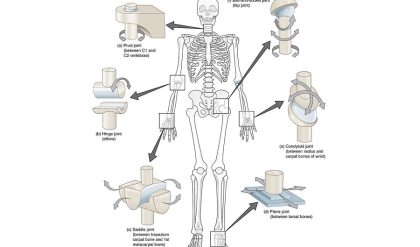Before I delve into what osteopathy means to me, let me tell you a little story about the founder of osteopathy and the key principles that underpin an osteopath’s approach to helping an individual with their goals and complaints.
Osteopathy is an allied health profession that was developed by Andrew Taylor Still in Missouri, USA in 1872. Before developing Osteopathy, Still followed in the footsteps of his father and worked as a physician. He did this for some time before becoming frustrated with the inconsistency he saw in medicine at that time. This frustration lead him down the path of developing his own approach to healthcare – Osteopathy.
Osteopathic Principles:
1). The body is a unit – body, mind and soul
2). Structure and function are reciprocally interrelated
3). The human body is capable of self-regulation and self-healing
4). Rational treatment is based on the above.
What does this mean to me as a modern day osteopath?
Let’s take into account that osteopathy was developed in the 1870’s, a time in which Arsenic was given to patients as a medicine and not long after the American Civil War. It, therefore, has progressed and changed over the years to become what is it today.
Do the above principles still play a role in the modern delivery of osteopathy?
In my opinion, they absolutely do. When I look at these principles, I see a lot of the modern push of medicine in them. Whether this is the biopsychosocial approach of treatment which involves looking not only at biological factors that might be contributing to their presenting complaint, but also psychological factors and social factors, or evidence showing that perhaps manual therapy isn’t doing the things we once thought it was, the principles can be adapted to this.
Looking at the first principle encompassing the body as a unit of body, mind and soul, I see a strong connection to the biopsychosocial model. Don’t get me wrong, the soul aspect of the principle is probably not quite as relevant today as it perhaps was in the 1870’s, as the interpretation of what the soul is I would expect would differ considerably between people in current times! Keeping that in mind, the social effect of pain on the individual is arguably of greater importance now that it has ever been.
When discussing how structure and function are reciprocally interrelated, meaning the two are mutually connected, and of mutual importance, I feel this is one of the more important principles to follow. In combination with a biopsychosocial approach, this principle ensures that each and every individual that walks through our doors is seen and treated as the complex being they are rather than a structure that needs to be fixed, or a case that simply needs to be solved. Looking at a client’s presenting complaint solely as a structural issue is doing a massive disservice to that individual. Not only do we need to see our client’s functionality and how this may be playing a role in their complaint, but we must also address the psychological and social factors that will also be a playing a role in their complaint.
The third principle, in my opinion, is something that is often overlooked and perhaps not quite considered by the people who come in to see their osteopath. As an osteopath, it is our role to assist the body to heal and recover itself rather than ‘fix’ or ‘cure’ any condition the person may walk in with. There are situations in which the individual’s injury will, in fact, resolve itself without intervention from a health care practitioner, while there are others that may benefit from treatment, exercise, advice etc. If the body is truly able to self-regulate and self-heal, then what can we do to assist in this? This could be as simple as modifying the client’s exercise/activity habits, changing the way they think and behave in relation to their pain or following a treatment plan. Often a combination of all is best.
Finally, once each of the above principles are considered and incorporated into each consultation, I feel the individual is in an ideal environment to get back to where they want to be.
This brings me back to a quote that I quite like by one of A.T. Stills students, “Osteopathy was not a mere spinal treatment… It was not a method of treatment at all. It was a principle upon which all treatment might be based”.
While osteopathy has been around for quite some time, the adaptability of its core principles allows osteopathy to continually progress in an evidence-based healthcare system. Contrary to what some believe, it is not simply a profession that involves only cracking joints and rubbing sore muscles, but a profession that allows many different approaches and methods to be used as required with the ultimate purpose of working together with the individual to achieve their health goals.



